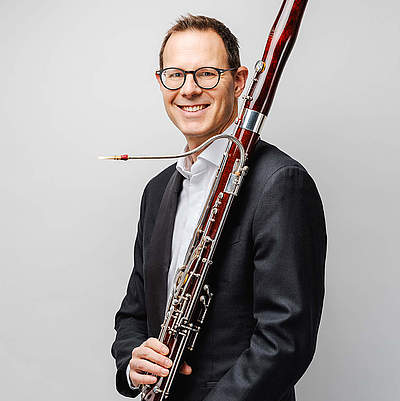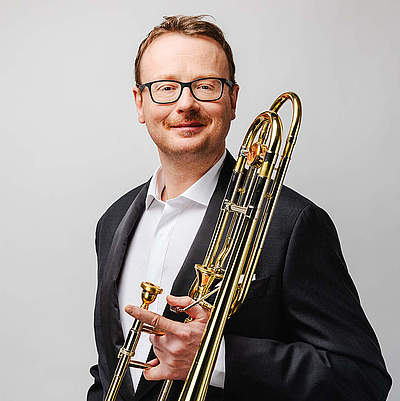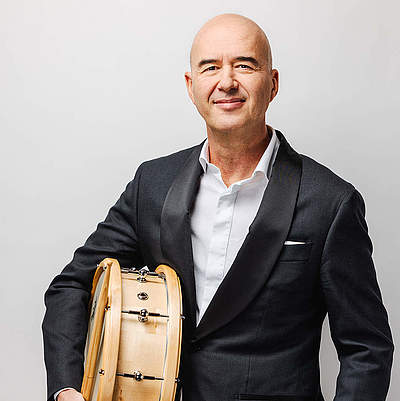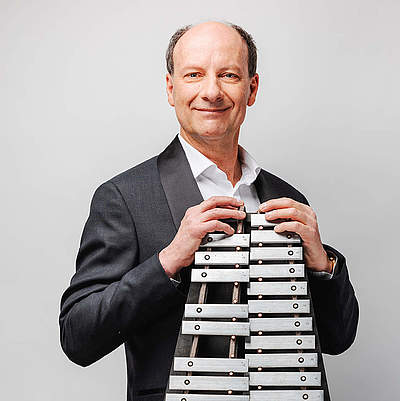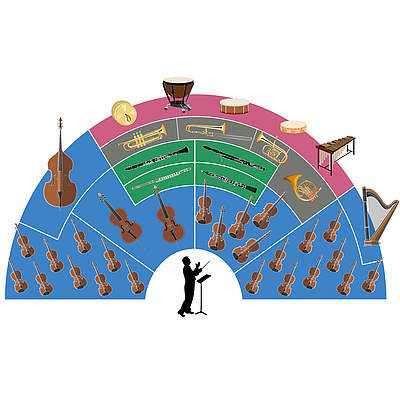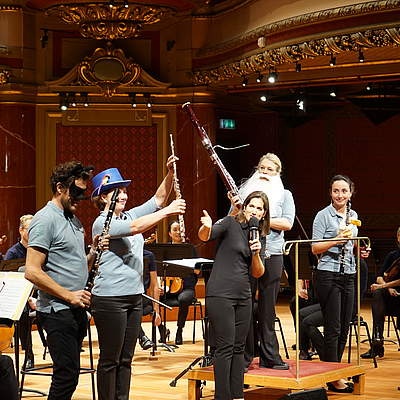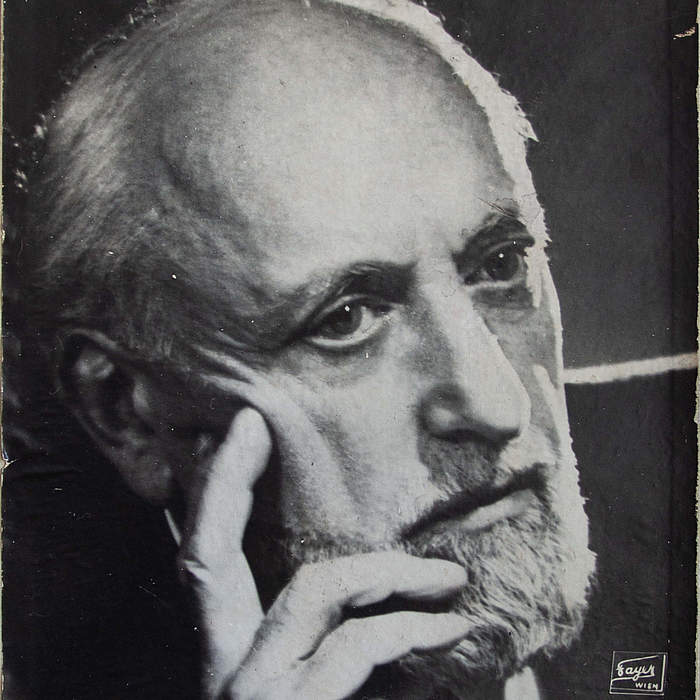
For music and record lovers all over the world the name of Ernest Ansermet is inseparable from that of the Orchestre de la Suisse Romande. It was with this orchestra that he spent the greatest part of his career. He was modest, upright, uncompromising, stubborn, opposed to the star system, and yet became one of the greatest conductors of his century. For many years Ansermet divided his time between music and mathematics, and even taught mathematics at one point. But his greatest love was music, and, after a long stay in Paris, he decided to devote himself to his passion. His first experience as a conductor was in Lausanne. Subsequently a series of chance opportunities propelled this young conductor on the threshold of his career on to the international scene.
One fine day in 1913, shortly after his appointment as conductor of the Kursaal Orchestra in Montreux, he met Igor Stravinsky who rapidly became one of his closest friends. Ansermet’s entire future artistic life stemmed from this encounter. It was Stravinsky who advised Diaghilev to hire Ansermet as conductor of his famous ballet company Les Ballets Russes. He also accepted to resume the direction of the City of Geneva’s “Subscription Concerts”. In 1916 he took the Ballets Russes on a vast tour of the USA, where, after having had to absorb overnight a difficult and large repertoire, he conducted 105 performances in as many days! The huge success of the Ballets Russes resulted in Ansermet being in great demand, and he enjoyed an interrupted series of successes: in 1918 he premiered Stravinsky’s A Soldier’s Tale, in 1920 The Song of the Nightingale and Pulcinella.
He also conducted other premieres, the most famous of which were Erik Satie’s Parade (1917), de Falla’s Three-Cornered Hat (1919), Prokofiev’s Chout (1923), and Stravinsky’s Capriccio for Piano (1929). He was now at the head of three orchestras: in addition to his work with the Ballets Russes, he had founded the Orchestre de la Suisse Romande, of which he was music director and administrator, and in Buenos Aires he had been asked to create a National Orchestra of Argentina. His growing fame opened to him the doors of the world’s major capitals. Yet he refused the most tempting offers, preferring to pursue tirelessly his mission in Switzerland, i.e. create in French-speaking Switzerland a musical environment worthy of the greatest capitals.
In addition to his activities with the OSR Ernest Ansermet also pursued a brilliant career. One of the highmarks of which was the creation of the Lucerne Festival. As Ansermet wanted to procure work for the OSR musicians during the summer he decided to organize a festival. Support was easily obtained in Lucerne and the first concerts, which were a great success, took place in 1937. The following year the Lucerne Festival’s reputation soared with the participation of Toscanini.
In 1939 Lucerne welcomed Toscanini, Busch and Bruno Walter, who had fled the Nazi regime which was in force at the Festival of Salzburg. After the war Ansermet premiered Benjamin Britton’s Rape of Lucretia at the Glyndebourne Festival on 2 July 1946, with Kathleen Ferrier and Peter Pears. Britten was one of the post-war composers most performed by Ansermet, who was one of his great admirers.
Two years later Ansermet was invited to La Scala de Milan to conduct another premiere: Stravinsky’s Mass. Despite the disagreeement between the two artists Ansermet had agreed to conduct this austere new work, inspired by the great works of the Ars Nova.
In the early 1950s Ansermet’s career gained an international dimension. He was in great demand in America, and in 1951 he conducted twenty-one concerts with the Boston Symphony Orchestra, replacing Charles Münch who was ill. In the 23 December 1951 issue of the Boston Sunday Post, he received rave reviews, the critics preferring him to Toscanini.
Although Ansermet’s name is often associated with those of Stravinski, Debussy or Ravel, we should not forget his association with Frank Martin. Ansermet considered this great Swiss musician as one of the major composers of our time, and in 1956, during the “Musikfestwochen” he premiered Martin’s La Tempête at the Viennese Opera, which was attended by musicians such as Bruno Walter and Karajan.
During the 1960s Ernest Ansermet concentrated increasingly on conducting the great classics. He recorded all of Beethoven’s nine symphonies, as well as those of Brahms and his German Requiem. Known the world over for his interpretations of XXth century music Ansermet’s approach to the classics is, unfortunately, not wellknown. To grasp the joy with which Ansermet approached these wellknown works, we should listen to his recordings of them, setting aside our preconceptions. His vision of Beethoven is free of inhibiting Romanticism, and reveals the novelty of the Beethovian language. Ansermet’s interpretations of Brahms’s symphonies (unanimously praised by international critics) are marked with typically Latin generosity and light, reminding us what a universal artist Brahms was.
Ansermet’s artistry could be defined as that of a “poet of precision”. Indeed, all of his interpretations bear the mark of meticulous precision and the search to attain the “right sentiment”. Ansermet believed that the truth of musical expression cannot be destroyed by analysis. The keys to Ansermet’s interpretations are balance, precision, beauty of style and warmth of execution, and that is why we are so moved by his art.
At the end of the war Ernest Ansermet was deeply concerned by the new trends in contemporary musical creations. With the same fervour that he displayed when defending the composers of his generation, he went to war against the advocates of the dodecaphonic language, multiplying lectures and incendiary articles. In order to clarify his thoughts, he spent fifteen years writing his vast philosophical and intellectual reflections into book-form, “The Foundations of Music in the Human Conscience”, a book which opened an almost unlimited field of investigation. Published in 1961, it was met with a wall of silence and incomprehension. Perhaps this monumental phenomenological study was ahead of its time, and we are only now starting to perceive the visionary aspect of Ansermet’s work.
